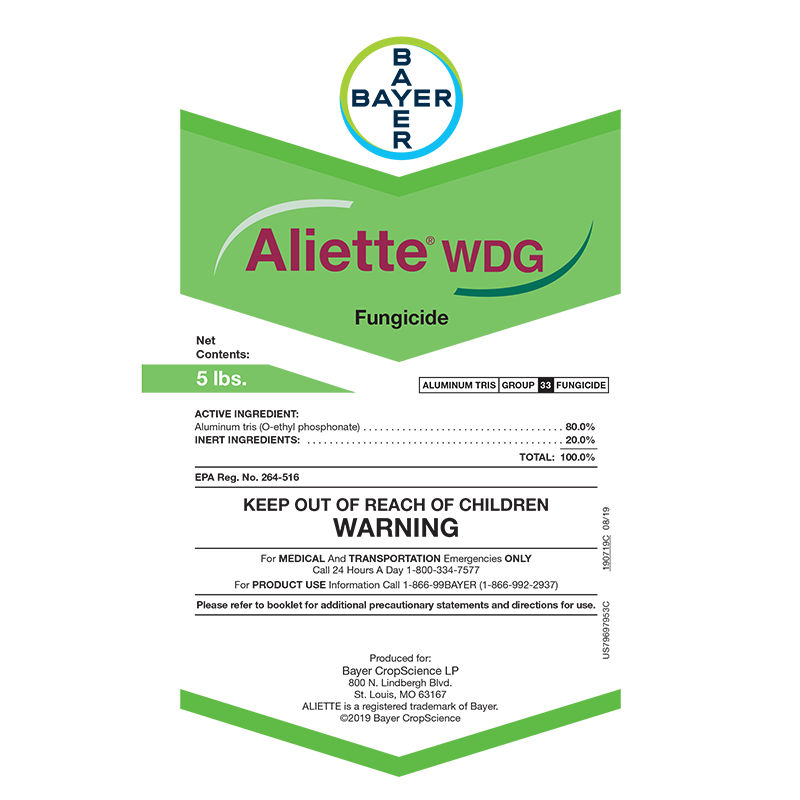Aliette WDG Fungicide
FungicideAliette® fungicide delivers true, two-way systemic protection against Phytophthora, downy mildew and other diseases. With multiple modes of action, Aliette attacks pathogens at various growth stages for better overall disease control. Its unique action not only attacks and controls fungi on contact, but also stimulates the plant's own defense mechanisms.
Approved In
AK, AL, AR, AZ, CA, CO, CT, DE, FL, GA, HI, IA, ID, IL, IN, KS, KY, LA, MA, MD, ME, MI, MN, MO, NC, ND, NE, NH, NJ, NM, NV, NY, OH, OK, OR, PA, RI, SC, TN, TX, UT, VA, VT, WA, WI, WV
Labels / Safety Data Sheets (MSDS)
ALIETTE WDG FUNGICIDE Label
ALIETTE WDG FUNGICIDE MSDS - Spanish
ALIETTE WDG FUNGICIDE MSDS - English
Aerial Application for Control of Phytophthora Root Rot on Bearing Avocado
For Use on Strawberries to Control Red Stele & Leather Rot
For Use on Almonds, Kiwi, Peaches, Plums, Prunes, Walnuts to Control Crown Rot & Aerial Phytophthora
Effective Against
Our portfolio has products to fight a variety of weeds, pests and diseases.
Alternaria Brown Spot Of Florida Citrus
Citrus Canker 2Ee Florida Suppression
Downy Mildew
Phytophthora Foot Rot
Registered Crops
Our products are available for use on a variety of different crops.
checkcitrus
checkhops
checkleafy vegetables
Additional Downloads
Aliette Product Bulletin 21
